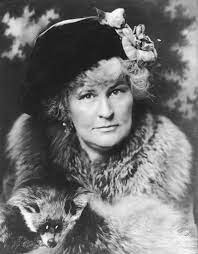By Chloe Brussard
Released October 7, 2005, "Good Night, and Good Luck" is a film about journalists at CBS radio station in the 1950's, and how they handled the Red Scare through media. There were threats of communism, and conspiracies that they have "infiltrated" the American government.
Looking at the radio station as a whole, it's different but also similar to the way that things are still done. There is still a lot of talk about politics, and how they are affecting people in everyday life, and still stories being thrown around a table looking for ones that they like the best.But they also had a live studio band. If they wanted to include music into their radio show, it had to be done live, and didn't have a prerecording of a song where they could just hit play and it'll start.
Another thing that's different is the ratio of men to women. In this film, the employees consisted of all males, except for the secretaries, who were women. Nowadays, there are many more female reporters who are, in theory, given the same media privileges as the men.
To signal the on-air personality, one of the producers had to tap their leg. It's such a small detail, manually tapping someone's leg, but in current on-air media, there are big light up signs that can signal them to begin, but they didn't have things like that in the 50's.
Focusing on the journalists, and their dilemma, they were worried about producing content that criticized the government because they were afraid of the backlash that they would receive from them. Some reporters want to publish that kind of content while others do not.
This radio show reported the facts, as unbiased as possible, which they did mention in the show. Criticizing the government could make them look like communist sympathizers, so the content they produced had to be very specific and not include anything that could come back and hurt them in the future. The reporters in this film are putting their careers on the line by reporting about the Red Scare. They believed so strongly in what they're producing that they are willing to do that, to give the public information that they deserve to know.
The CBS reporters talked about the "hard politics", which included the Red Scare. They did what other stations were scared to do. There was a huge possibility that their reports could get their station shut down. The higher-ups in the station were trying to convince the on-air reporter to stop reporting on the communists, because even they were getting nervous about their station being shut down.
If they were going to continue reporting on the communists, though, it was made clear that anyone who had any sort of communist ties had to be let go, but the one man who did have a connection, albeit very far, wasn't let go because the reporters believed in standing their ground.
Other journalists were both commending and criticizing the reporters at CBS who spoke out about Joseph McCarthy, coming at them both as a whole station, but also others specifically. They were targeting other reporters who agreed with him.
Once reporting on the communists became a serious thing, Senators began going after then "newsmen". The people of the government started throwing around their titles as a way to show their superiority, but all the reporters are doing is exposing their actions to the public in the bluntest way possible.
The actions done by the CBS reporters began to lose them sponsors, because companies couldn't afford to be associated with communist sympathizing stations.
I think that what the people at CBS did was extremely brave. They risked their career, and the careers of others to report the truth, and that's all you can do, really. Sometimes, reporting the truth is much harder than reporting what people want to hear.
Even today, the government and media still clash over stories because they have become so intertwined with each other. Not everyone is going to agree with everything, so receiving backlash is expected as journalists.
One thing though, that has unfortunately continued is false reporting. Some reporters are reporting what people want to hear, and they are reporting only certain things in stead of the whole story. In order to have a well-rounded story, you must have all the facts. You can't pick and choose what information you want to show the people, because the public has a right to know what is going on in their government and how it could possibly affect their lives.












